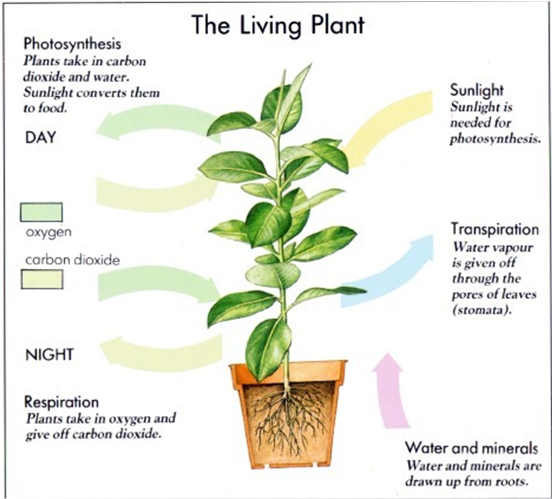30 Leaves
The main functions of leaves are usually photosynthesis and transpiration.
- Photosynthesis is the process by which plants, some bacteria and some protistans use the energy from sunlight to produce glucose from carbon dioxide and water, which is used for respiration.
- All living things use a process called respiration to get energy to stay alive. Cellular respiration in plants is the process used by plants to convert nutrients obtained from soil into energy which fuels the plants’ cellular activities.
- Transpiration is the process by which moisture is carried through plants from roots to small pores on the underside of leaves (stomates), where it changes to vapor and is released into the atmosphere. Transpiration is essentially evaporation of water from plant leaves. Transpiration cools plants and helps mineral nutrients and water move from roots to shoots.

